Mano Le Tough: “If I can get one or two good tracks out of each synth then they kind of pay for themselves”
The Irish producer discusses new album, At The Moment, and his sizeable synth collection
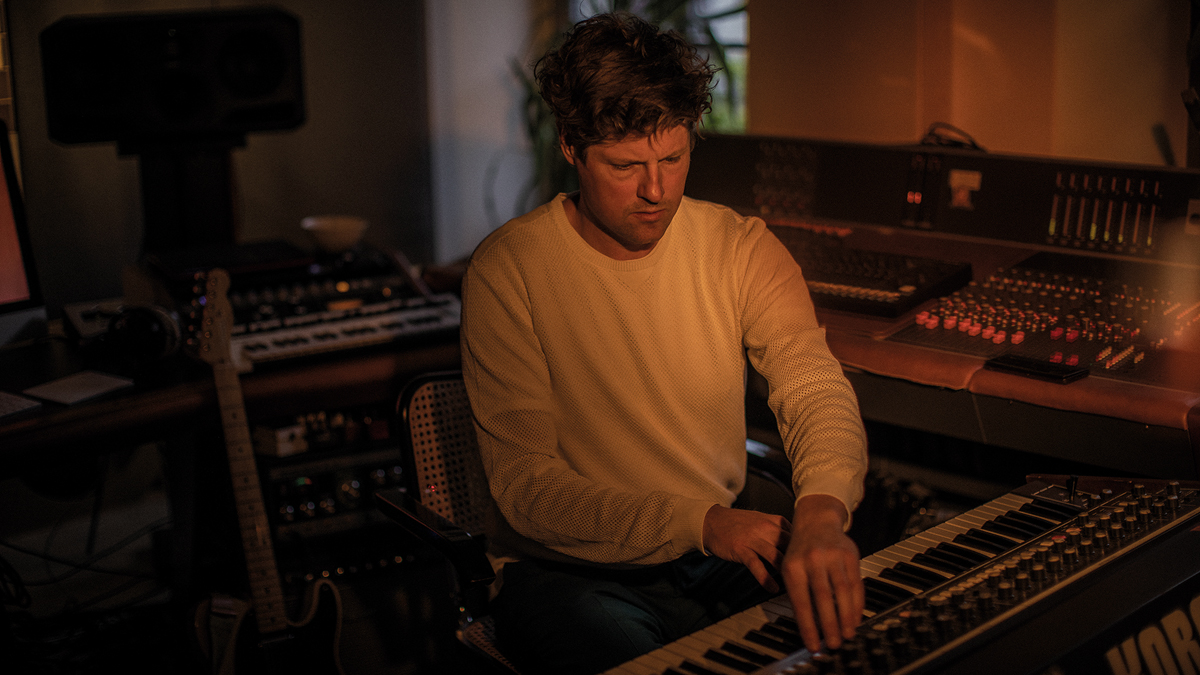
As Mano Le Tough, Irish-born Niall Mannion garnered immediate critical acclaim for his debut album Changing Days (2013) - a melodic, genre-hopping blend of modern disco and atmospheric house.
Following his second album, Trails, and almost a decade living in Berlin, the guarded yet increasingly sought-after producer/DJ upped sticks to seek solace in the serene, rolling hills of Meilen near Zurich.
Stuck at home over the past 14 months and looking for creative impetus, Mannion returned to his formative years spent playing in post-punk/indie bands. Picking up his instruments once more, his third Mano Le Tough album, At The Moment, is a melancholy yet cautiously optimistic collection of expressive vocal pop, containing slithers of the dance culture he’d been forced to abandon.
When did you move to Zurich and is that a good base for an electronic musician?
“I moved here around five years ago after living in Berlin for eight years before that, so it was a bit of a change. Obviously Zurich isn’t the electronic music mecca that Berlin is, but that suited me at the time. If you travel a lot there’s few better places to travel from, and up until Covid times I was travelling every weekend.”
It sounds like you took the opportunity to make this album while the pandemic was raging. Has the time spent recording at home been useful from that perspective at least?
“Yes it has been because I’d wanted to make a new album but that process was getting interrupted every year by being on the road too much. This time, although it was extremely difficult for many reasons, being at home gave me the chance to work properly on the record and finish it. I’d been gathering material for quite a while. A couple of tracks survived from those original demos, but most were made starting February and March 2020.”
Want all the hottest music and gear news, reviews, deals, features and more, direct to your inbox? Sign up here.
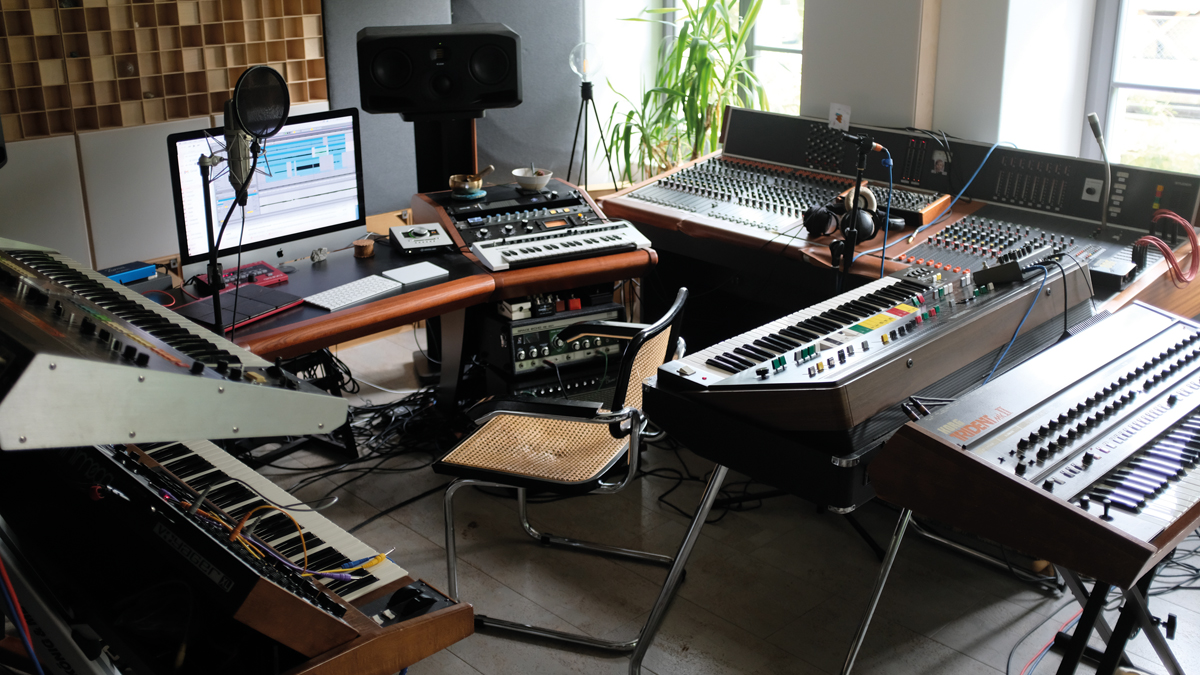
Would it be fair to say that working from home while raising a young family presented some ‘logistical’ challenges?
“Kind of - I do get interrupted quite a lot. I’ll be recording vocals and all of a sudden a child comes crashing in so it’s a little bit difficult to get the takes right [laughs]. If my wife’s out with the kids I can concentrate, otherwise I work when they go to bed.
“My eldest is four and my youngest is a year and a half, so for them it’s completely normal to have a studio full of gear to bash away on, but only time will tell if they have an interest in all that stuff.”
The dance music references seem a little lighter on At The Moment. Is this the pop album you’ve always wanted to write?
“I just felt a lot freer in terms of not thinking in a club context when it came to arrangements and BPM ranges. In the past, my records have always had one foot in the dance world while also trying to express myself. This time, I didn’t want to put myself under any constraints.”
It’s upbeat, but quite melancholy. Does that reflect the mood of the times?
“There are some tracks that directly reference what’s been going on in terms of the whole pandemic situation. It’s the first existential crisis that I’ve experienced where most of the things I took for granted were completely turned upside down.
“That’s reflected in a few of the tracks but I wouldn’t say the album is overtly melancholic; there are still some hopeful bits. Everything I write is about something I’ve experienced, but the creative element of making music is definitely about creating a space where I can escape from whatever’s going on.”
With commercial pop music there are 20 songwriters working on a project and it’s done in a very clinical way, but that’s very different when it’s coming from one voice.
What was your experience writing more pop-oriented songs and how has everything that’s been happening fed your temperament?
“I need to be stimulated to have something to write about, so I find that when things aren’t going great or there’s a problem I’m forced to create more. If everything’s going well, I’ll still go into the studio but definitely won’t feel the need to write as much and I think that’s quite common for most musicians.
“In terms of the songs being more pop-oriented, the tracks may have a pop structure but a lot of the sound is dependent on where I’m coming from artistically these days. With commercial pop music there are 20 songwriters working on a project and it’s done in a very clinical way, but that’s very different when it’s coming from one voice.”
Did you find lots of past influences seeping into the music this time?
“I felt that I was going full circle back to the music I grew up with, but filtering it through the lens of my electronic music or DJ career. A lot of it’s got that post-punk/indie vibe going on using dance music sounds, but the idea wasn’t to overtly reference anything and I probably don’t even recognise when I’m doing that.
“I wouldn’t say it’s a change in direction, just the logical next step. For me, all the music I make inhibits the same world. I suppose there’s been a bit of a creative rebirth - I’ve felt much more inspired over the past two years in terms of how I think about music.”

The most notable change is that the album’s a lot more acoustic-driven…
“I played quite a lot guitar and bass on the record before mixing in the more synthetic elements. Before I was making electronic music I started off by playing instruments in bands, so I went back to that.
“I’m a much better guitar player than I am a keyboard player and found that I can express myself better playing guitar than keyboards so I thought it would be a good idea to use that technique a bit more.
“I played quite a lot of classical guitar, just to get different timbres into the sound. I’ve got a Hanika and a couple of electric guitars, including a Fender Telecaster and a jazz bass, so they’re all over the record. I also have a violin, which belonged to my wife from when she was a child. I managed to generate a few sounds out of that because she’s not a great violin player, unfortunately.”
Have you found that your songwriting style has changed to complement the tools that you’re now using?
“The process tended to change on every track, but I guess the process was still similar to how I made dance records.
“Typically, I’ll start by making loops in the computer and programming drums, so I didn’t really change that or write as a singer/songwriter would by using chords or taking a verse, chorus, verse, chorus approach. I’d make loops, start layering the guitars and synths and develop the tunes from there.
“There are still beats on pretty much all of the tracks, though they’re not always prominent.”
How have you found recording live instruments in a home environment?
“The room’s quite insulated from the outside. There are a lot of windows, but I don’t get a huge amount of background noise and the room’s semi-treated so it’s not completely dead.
“These days you can get a pretty good recording playing acoustic instruments at home. I’ll typically record the guitars through a small Fender Super Champ and have that running through a channel on my Studer 963 mixing console and into my soundcard. I also used the Roland RE-201 Space Echo a lot when recording guitar because that sounds pretty decent.”
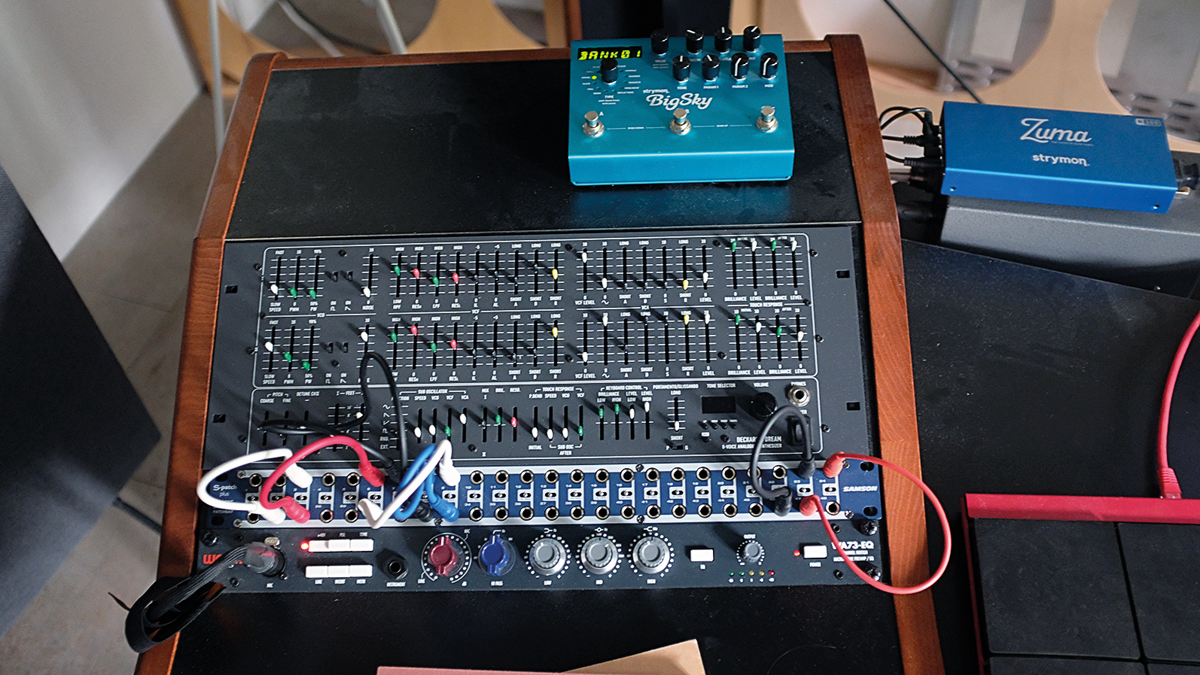
What’s your vocal setup?
“For most of the vocals I used a Neumann U67 and had that running into the Studer. I’ve got a UAD LA2A clone and a Warm Audio WA73 preamp, which is a clone of the classic Neve 1073, so I’d often run the Neumann through those and go straight into the soundcard.”
Was it a challenge mixing the acoustic and electronic elements, especially as the tracks often interchange between the two?
“The mixing process was more of a challenge than the recording because a lot of the tunes were different sound-wise, but somehow it all glued together.
“I pretty much mix as I go, which I think is a common way to work now that we have everything at our fingertips. I might tune stuff or do a bit more EQ and compression while I’m mixing, but I’d definitely be doing a lot of that while I was recording the tunes too.
“Mastering was done by Hans-Philipp Graf at Deinklang who does all of the Pampa and DJ Koze records. Thankfully, my masters were pretty good so I didn’t have any big issues with that.”
You seem to favour a circular gear setup - surrounding yourself with instruments that are all in easy reach.
“It’s as ergonomic as possible. I’m not mega-organised but I do need to feel connected to my gear, so I like to have all of it around me purely to enable my creativity and not have to think about what I’m using so that I don’t have to mess around when I want to record.
“I also prefer playing stuff because that’s the way I tend to write music. I have a piano in the kitchen and very often I’ll have a play on that to start off some song ideas before playing them on the synths in the studio.”
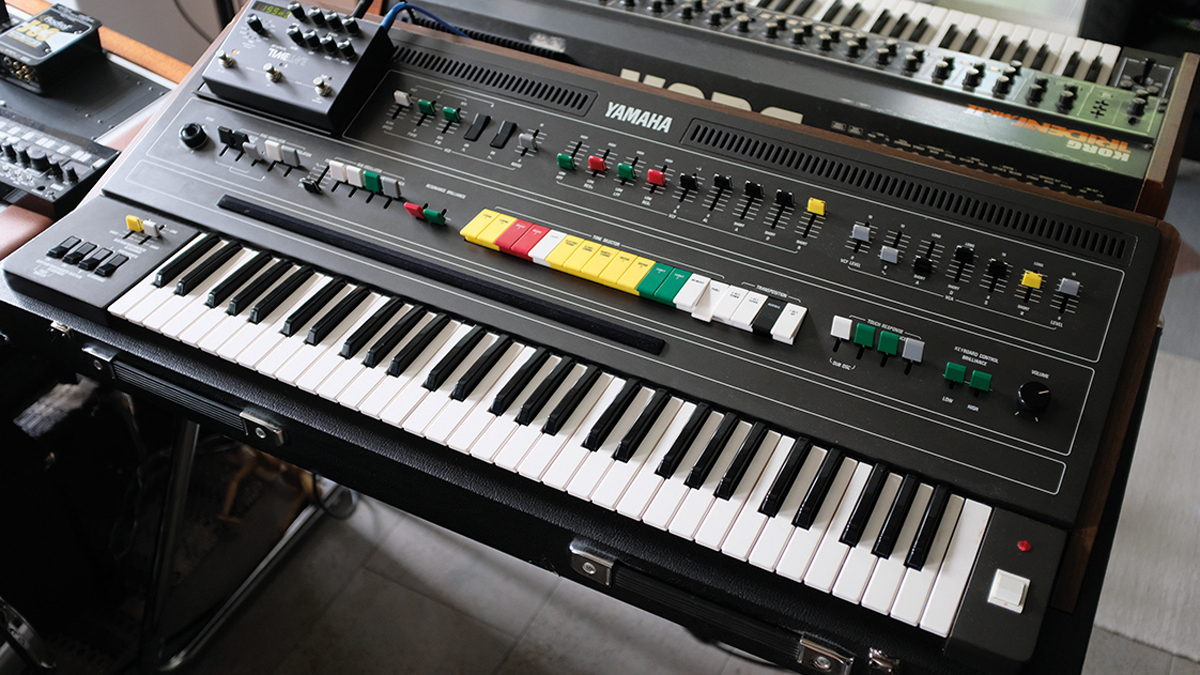
At first we thought you had the Yamaha CS-80, but it’s actually the CS-60?
“The CS-60 didn’t feature that much on this record because it’s a pretty recent acquisition, but I’ve been keeping my eye out for years for either a CS-60 or a CS-80 because I love all the old polysynths.
“The Yamaha synths were top of my list and I found a CS-60 in Switzerland that had been in some guy’s attic for 25 years. It’s in pretty much pristine condition and it’s an amazingly expressive instrument. Like the CS-80, it’s really well laid-out and got the ribbon controller and a ring modulator. Although the aftertouch is monophonic rather than polyphonic, it’s still an awesome synth.”
Is the CS-60 responsible for that lovely, evocative keyboard sound on Fado Fado?
“No, that’s the Korg Trident MkII, which is another classic polysynth from around 1982. I got it in Zurich from a second-hand website. In some ways it’s a bit limited compared to the CS-60, but it has loads of vibrato, chorus effects and synth, brass and string sections that can be blended together or separated out across three channels on a desk. The delay, vibrato and flanger give it a really different character to all my other synths and it’s especially good for organ sounds. There’s a track on the album called Pompei where I used the Trident for the warbling lead sound.”
You also have the Roland Jupiter-8 polysynth...
“The Jupiter-8’s incredible. I bought that years ago when I was in Berlin and use it quite a lot for chords, but one of the first synths I bought was the Moog Voyager XL and I still use that for all the basslines and sequences, so it’s probably the synth that I know the best out of all of them.”
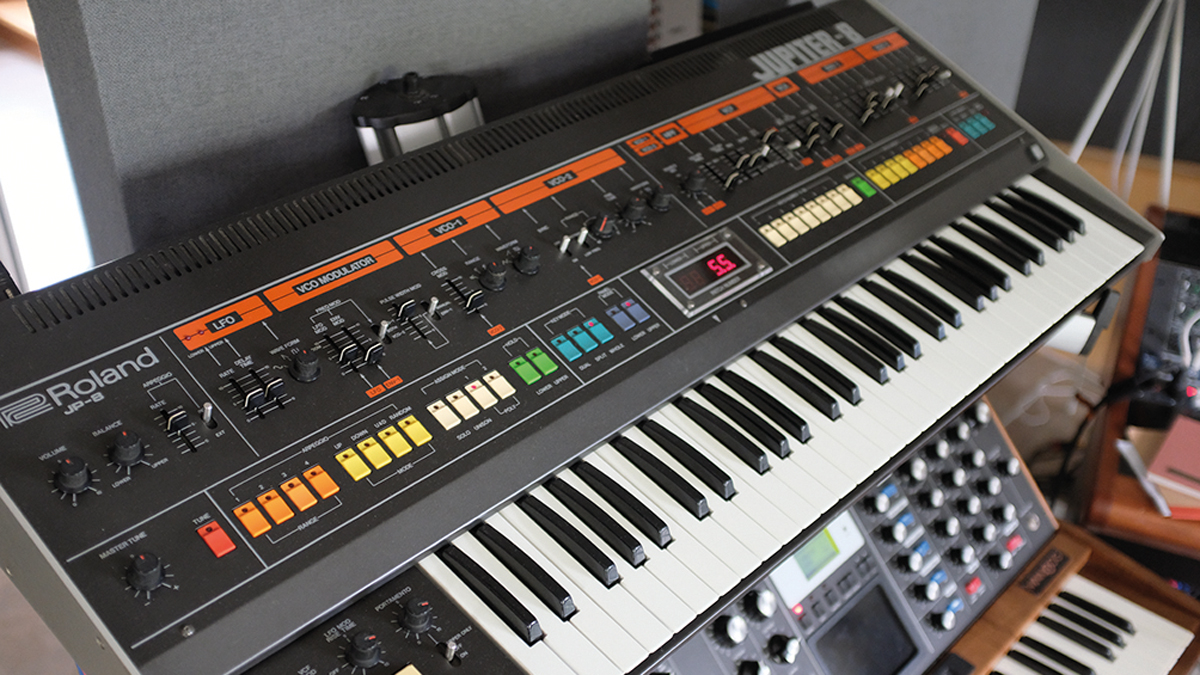
You’re a bit of a polysynth fan...
“It’s definitely an expensive hobby but if I can get one or two good tracks out of each synth then they kind of pay for themselves. They go up in value, too, so you don’t feel you’re just throwing your money away. But I’m trying to take a break from buying gear at the moment because I’ve bought quite a lot over the last couple of years and I think it’s best to just learn them a bit better. At least that’s what I usually say and then I ended up buying the CS-60.”
How does the Deckard’s Dream 8-Voice analogue synth - itself an emulation of the CS-80 - compare to the CS-60?
“The Deckard’s Dream is great, but the CS-60 is from a different era. Athough they sound similar, the CS-60 is a different beast. It was built in 1977 so it’s absolutely gigantic and weighs around 120kg, which means it’s not the most convenient instrument, but there’s been no expense spared.
“The Deckard’s Dream is an amazing module but you can hold it in one hand, which makes more sense for how people work nowadays. I’ll usually just program a MIDI sequence and run it through the Deckard’s Dream, so I don’t really use it so much for playing, but it sounds really good and it’s one of my favourites.”
You seem to like putting your synths though various pedals?
“You can put a delay on any instrument and I find they’re especially good for synth bass and lead lines. I usually interchange between using the Strymon Big Sky and the TimeLine because a bit of delay just brings the sound to life a little bit more, then I’ll run them through the Studer console.
“I actually wanted to buy one of the smaller Studers like the 962, which is a more portable version, but the 963 console is really common in radio stations. It’s got an unbelievably high fidelity, which makes everything sound very clean and I found this one for a really low price in Switzerland even though it takes up half the room.”
Recently, I’ve given away gear or let my friends have some for a while because there’s definitely a danger of having too much stuff that ends up just sitting there.
Is it easy to source gear in Switzerland?
“There are a few second-hand websites and I’m always keeping an eye out for certain synths. I bought the Trident off a guy who had a huge collection of polysynths from the ’80s - basically all of them [laughs]. It had definitely been in a smoker’s studio, though - it’s the smokiest synth I’ve ever bought. It’s got cigarette burns and smelt a bit when I got it, but I’ve got used to that now.”
Some producers are afraid to chuck out gear, are you one of those?
“There’s certain gear that I know really well and always rely on for certain sounds, but sometimes you’ll get inspiration from a device that’s been sitting in a corner for six months, so every time I think I should get rid of gear I usually remind myself that just by changing stuff around I’ll find new inspiration.
“Recently, I’ve given away gear or let my friends have some for a while because there’s definitely a danger of having too much stuff that ends up just sitting there.”
You have plenty of great analogue synths but seem reticent to use modular to build sounds from the ground up.
“I do have one module, the Make Noise Shared System, but the Make Noise stuff’s very complicated and not very intuitive. I’ve been mostly using it for sound effects and weird stuff, routing sounds through the Erbe-Verb and the delay.
“I haven’t delved too deeply into modular gear as the way I make music the song always comes first and with modular the system guides you more than you’re guiding it, so it’s just a different way of working.”
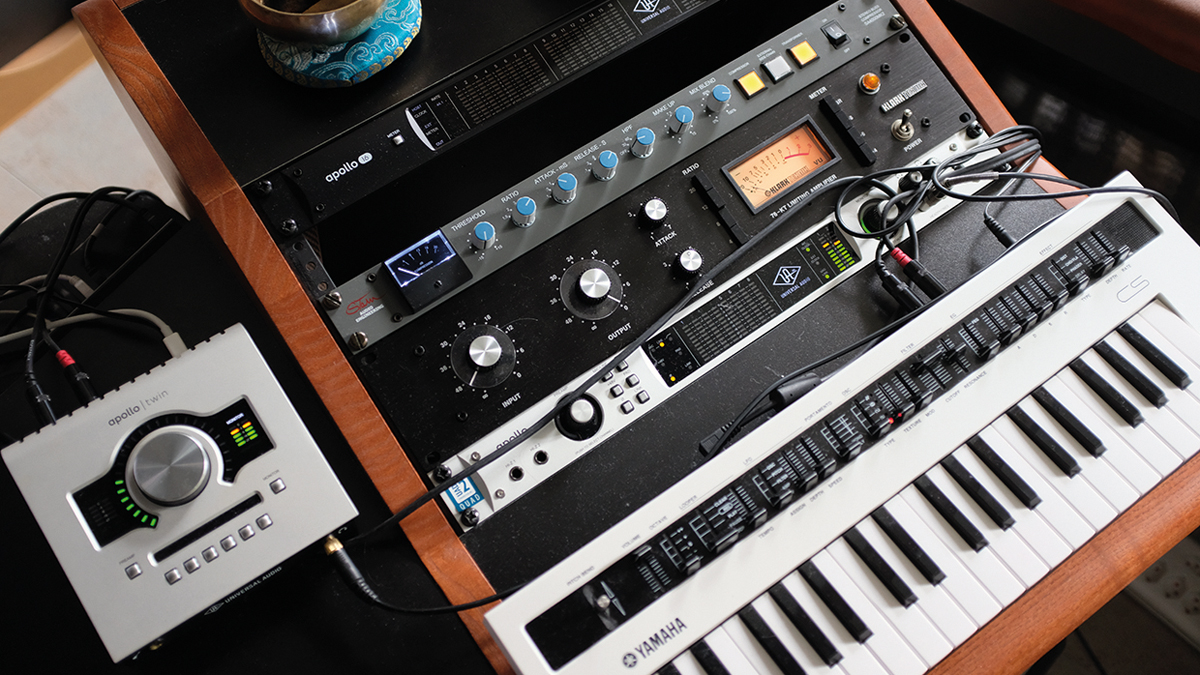
What can you tell us about the Yamaha reface CS synth, which is a revival of the Yamaha Control synth series?
“I learned about the instrument from Floating Points after I saw an interview he did where he said he was using it in his live sets. It’s a very simple polysynth that’s super-easy to use and convenient, and because it’s small it can just sit on my desk next to my trackpad and keyboard.
“You can plug in a USB stick, program stuff really easily and it sounds really good. I use it a lot for writing ideas and it’s definitely a device people should consider if they want to get some bang for their buck.”
What are you using for beat creation?
“I have the Nord Drum 2 and play that alongside the Nord Pad, which gives you six different sounds on the pads and you can play them with sticks. I used them a lot on this record for percussion and the Nord Drum is really good because you can program your own stuff and it sounds very unusual compared to most drum machines, especially its bell tones and tuned percussion sounds.
“I record all the hi-hats and snares acoustically, but I also have Superior Drummer 3, which is a sample-based drum library. I found that I’d never really used drum samples before, but it has some amazing sounds in it.
“I also have a Vermona DRM1 MKIII analogue module, which I use a lot for creating some of the weirder and more synthetic drum sounds.”
Are you generally using an auxiliary bus for your drum compression?
“I use the Stam Audio SA4000 MK2 as my bus compressor for drums. It’s a lovely bus compressor but I also like to use plugins and compare them, and if you compare it to the UAD SSL bus compressor it’s very difficult to tell them apart. The Stam has a transformer button you can press, which makes it sound a bit more like an API and gives it a slightly different kind of flavour, but the difference is pretty much indistinguishable.
“UAD have really nailed it. I have three of their soundcards linked together and they’re pretty much the bedrock of my I/O system.”
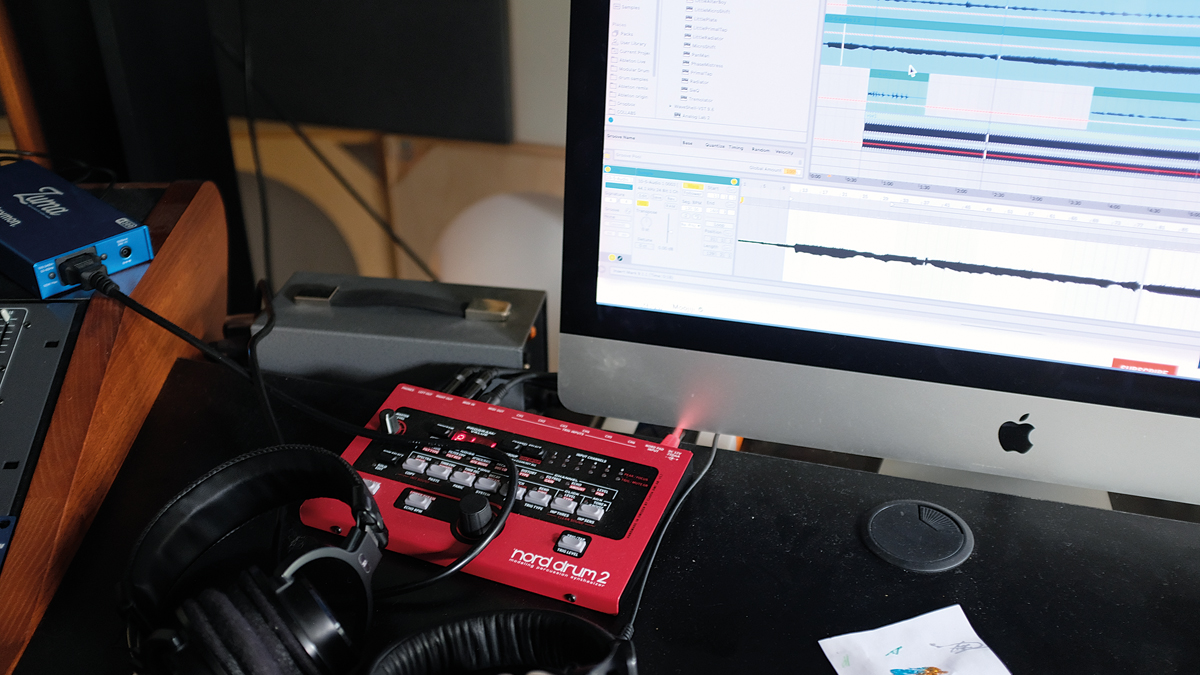
What path have you taken when it comes to software sequencing?
“I used FruityLoops for a while and messed around with Cubase, but the first time I got Ableton Live was a mind-blowing experience because I found it so intuitive and could make tracks from start to finish.
“That hasn’t always been the case with Ableton because people have definitely had issues with it in the past, but sound-wise it’s improved a lot over the last few years. The latest version sounds just as good as Logic or any other DAW.”
In the absence of DJing, have you decided whether you’ve missed it or did you view it more as a necessary evil?
“Although I’m predominantly a music producer, I really love DJing and it’s definitely something I’m passionate about. There’s just something about the visceral, immediate feedback that you get when you’re DJing that I really miss because it’s a real-life experience. Being in the studio and working on music is great and you get to express yourself, but there’s something about being around other people that makes a massive difference.
“To be honest, last year I tried not to think about DJing too much because I didn’t want to get into a mind-set of missing it too much, but now I’m really looking forward to getting back to it.”
Have you been keeping your hand in and practising on your home setup?
“Having worked on the record for months I’ve been practising more with my DJ setup recently. The first time I started playing again I felt like I’d maybe forgotten how to do it for the first 20 minutes, but it all came back pretty fast.
“I’m playing in the Netherlands next week and then I go to the US later in July and have more bookings for the next few months. Whether they all happen remains to be seen, but it seems like it’s slowly starting up again.”
Do you have any intention of performing At The Moment in a live band environment?
“I have one live show booked for next year, which will be my live show debut, but it’s still in development. As mentioned, I came from playing in live bands growing up and loved the experience of interacting with other musicians, so there’s a good chance the shows will be like that.”
Mano Le Tough’s album At The Moment is released 20 August on Pampa Records.

